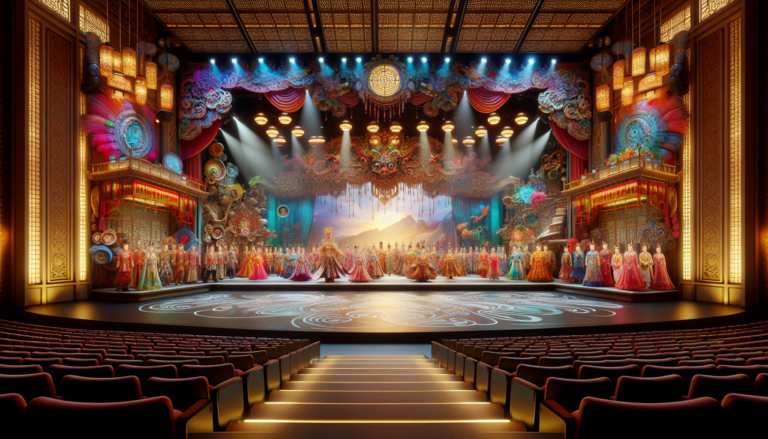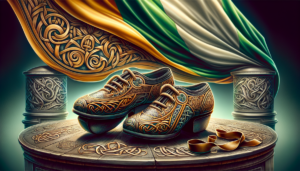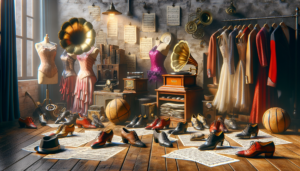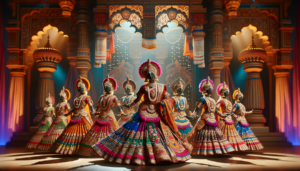Introduction to Dance Production
Dance production is a complex and multifaceted endeavor that brings together various elements such as stage design, costumes, lighting, and choreographed movement to create a captivating performance. Typically staged in a theater setting with music and technical elements, dance productions require careful planning, coordination, and execution to ensure a successful show.
What is Dance Production?
At its core, dance production involves the process of creating and presenting a dance performance. This encompasses all aspects of the show, from the initial concept and choreography to the final staging and presentation. Dance productions can range from small, intimate performances to large-scale productions with elaborate sets, costumes, and lighting designs.
The Importance of Dance Production
Dance production plays a crucial role in the world of performing arts. It allows choreographers and dancers to showcase their artistic vision and skills, while also engaging and entertaining audiences. A well-executed dance production can evoke powerful emotions, tell compelling stories, and leave a lasting impact on those who experience it. Moreover, dance productions often serve as a platform for cultural expression, social commentary, and artistic innovation.
Key Elements of Dance Production
Stage Management
Stage management is a critical component of dance production, responsible for coordinating all aspects of the performance. This includes overseeing rehearsals, managing the stage crew, and ensuring that all technical elements, such as lighting and sound, are executed flawlessly. The stage manager acts as the central point of communication between the artistic team, technical crew, and performers.
Choreography
At the heart of any dance production lies the choreography. Choreographers are responsible for creating the movement vocabulary and sequences that will be performed by the dancers. This process involves selecting music, developing themes and concepts, and crafting a cohesive narrative or abstract expression through movement. Choreographers work closely with dancers to refine and perfect the choreography, ensuring that it effectively conveys the intended message or emotion.
Technical Direction
The technical direction of a dance production encompasses all aspects of the show’s visual and auditory elements. This includes designing and implementing lighting, sound, and set designs that enhance the overall performance. Technical directors work closely with the artistic team to ensure that the technical elements align with the creative vision and support the choreography. They also manage the technical crew, including lighting and sound operators, to ensure smooth execution during the show.
| Element | Description |
|---|---|
| Stage Management | Coordinates all aspects of the performance |
| Choreography | Creates movement vocabulary and sequences |
| Technical Direction | Designs and implements visual and auditory elements |
Roles and Responsibilities in Dance Production
Production Staff
The production staff plays a vital role in bringing a dance production to life. This team includes a wide range of professionals, such as:
- Artistic Director: Oversees the creative vision and direction of the production
- Choreographers: Create and develop the movement content
- Dancers: Perform the choreographed routines
- Costume Designers: Create the visual appearance of the dancers through clothing and accessories
- Lighting Designers: Develop the lighting schemes to enhance the mood and atmosphere
- Sound Designers: Create the auditory landscape of the production
- Stage Crew: Manages the technical aspects of the performance, including set changes and prop management
Each member of the production staff contributes their expertise and creativity to ensure a cohesive and impactful performance.
House Manager
The house manager is responsible for overseeing the front-of-house operations during a dance production. This includes:
- Ensuring the safety and comfort of the audience
- Managing the ushers and other front-of-house staff
- Coordinating with the stage manager and technical crew
- Handling any audience-related issues or emergencies
The house manager plays a crucial role in creating a positive audience experience and ensuring that the performance runs smoothly.
Box Office
The box office is responsible for managing ticket sales and distribution for the dance production. This includes:
- Processing ticket purchases, whether in-person, online, or over the phone
- Managing seating assignments and capacity
- Providing customer service to patrons
- Coordinating with the house manager and front-of-house staff
An efficient and well-run box office is essential for ensuring that patrons can easily access the performance and have a positive ticketing experience.
Executive Director
In many dance organizations, the executive director is responsible for overseeing the business and administrative aspects of the company. This includes:
- Managing budgets and financial operations
- Developing and implementing fundraising strategies
- Overseeing marketing and public relations efforts
- Collaborating with the artistic director to ensure alignment between the creative and business objectives
The executive director plays a vital role in ensuring the financial stability and long-term success of the dance organization.
Front of House and Backstage Operations
Front of House
The front of house encompasses all areas of the theater that the audience interacts with, including the lobby, ticketing, and seating areas. Key front-of-house staff include the house manager, ushers, and box office personnel. These individuals are responsible for creating a welcoming and efficient environment for patrons, ensuring their safety and comfort throughout the performance.
Backstage Operations
Backstage operations refer to all activities that take place behind the scenes to support the onstage performance. This includes:
- Technical operations, such as lighting, sound, and set changes
- Wardrobe and costume management
- Props and equipment handling
- Dancer and choreographer support
The backstage crew works tirelessly to ensure that all technical and logistical elements of the production are executed flawlessly, allowing the performers to shine onstage.
Marketing and Promotion in Dance Production
Marketing Strategies
Effective marketing is essential for attracting audiences and generating buzz around a dance production. Common marketing strategies include:
- Developing compelling promotional materials, such as posters, flyers, and trailers
- Utilizing digital marketing channels, such as social media and email campaigns
- Securing media coverage, including reviews and interviews
- Partnering with local organizations and businesses for cross-promotion
A well-executed marketing campaign can help build anticipation and drive ticket sales for the production.
Utilizing Social Media
In the digital age, social media has become a powerful tool for promoting dance productions. Popular platforms such as Facebook, Instagram, and Twitter allow dance organizations to:
- Engage directly with their audience and build a loyal following
- Share behind-the-scenes content and sneak peeks of rehearsals
- Announce upcoming performances and ticket sales
- Collaborate with influencers and other artists to expand their reach
By leveraging the power of social media, dance organizations can create buzz, foster community, and attract new audiences to their productions.
Organizational Support for Dance Production
Advisory Councils
Many dance organizations rely on advisory councils for guidance and support. These councils are typically composed of experienced professionals, patrons, and community members who offer their expertise and networks to help advance the organization’s mission. Advisory councils can provide valuable insights on artistic direction, financial planning, and community engagement.
Board of Directors
Most dance organizations, particularly those operating as non-profits, are governed by a board of directors. The board is responsible for:
- Setting the overall strategic direction of the organization
- Ensuring financial stability and accountability
- Hiring and evaluating the executive director
- Advocating for the organization within the community
A strong and engaged board of directors can provide invaluable support and leadership to help a dance organization thrive.
Case Study: Nye Dance Productions
Overview of Nye Dance Productions
Nye Dance Productions is a dance studio located in Oregon and Toledo, Ohio. Founded with the mission to “instruct, enhance, and inspire safe technique within the art of dance,” Nye Dance Productions offers a range of classes and performance opportunities for dancers of all ages and skill levels.
Recent Events and Engagement
Nye Dance Productions actively engages with its community through events and performances. Recently, the studio hosted an Open House to welcome potential students and promote registration for its upcoming Season 6 classes. The event was promoted through social media, using hashtags such as #OpenHouse, #Season6, #DanceStudio, and #RegisterNow to build excitement and encourage participation.
Community Impact and Reviews
Nye Dance Productions has made a positive impact on its local dance community. With a strong presence on Facebook, boasting over 900 likes and 1,000 followers, the studio has cultivated a loyal following. According to online reviews, 72% of reviewers recommend Nye Dance Productions, praising the studio’s welcoming atmosphere, skilled instructors, and dedication to fostering a love of dance in its students.
Conclusion
Summary of Key Points
Dance production is a complex and collaborative art form that brings together choreography, stage management, and technical direction to create captivating performances. From the front of house to backstage operations, each element plays a crucial role in ensuring a successful production. Effective marketing strategies, including social media engagement, are essential for building audiences and generating excitement around performances.
Future of Dance Production
As the world of dance continues to evolve, so too will the art of dance production. Advances in technology, such as immersive audio-visual experiences and interactive stage design, are opening up new possibilities for creativity and audience engagement. However, at its core, dance production will always rely on the passion, skill, and dedication of the artists and technicians who bring these performances to life. By embracing innovation while honoring tradition, the future of dance production promises to be an exciting and dynamic one.






